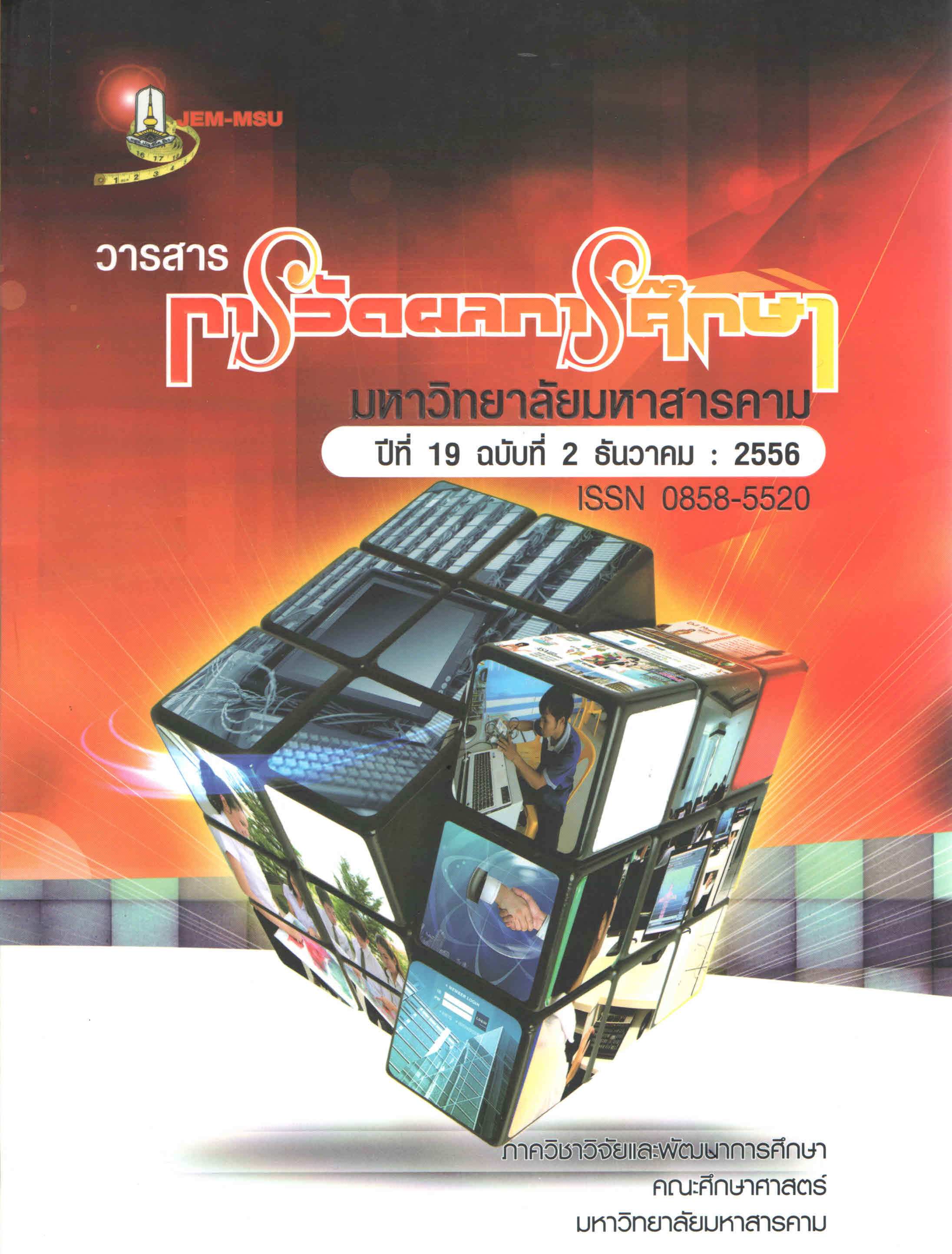Factor Analysis perception of risks behavior in the Internet in Matthayomsueksa 4 Chaiyaphum Province.
Main Article Content
Abstract
The purpose of this study was to develop and examine the validity of the causal model
of of risks behavior in the Internet in Matthayomsueksa 4 Students under the Educational Service
Area Chaiyaphum and to study the influences of Internet Behavior Risk Perception, Self-Control,
Self-confidence, Adversity Quotient, Attitude in internet, Functioning of the familyand Media
influence on attitudes toward risks behavior in the Internet in Matthayomsueksa 4 Students under
the Educational Service Area Chaiyaphum. The sample consisted of 1,000 students from the 20
Chaiyaphum in the the Educational Service Area Chaiyaphum which enrolled in the second
semester of the academic year 2012, selected by a multi-stage stratified random sampling
technique. The tools used for the study were the measurements of attitudes toward Functioning
of the family, Media influence, Adversity Quotient, Self-Control , self-confidence, Attitude in
internet and Internet Behavior Risk Perception reliabilities at .779, .690, .735, .770, .721, .790, .681
respectively. Data were analyzed by latent variable of path analysis of structural equation
modeling (SEM). The results of the study were as follows: 1)The causal model of perception of
risks behavior in the Internet in Matthayomsueksa 4 Students under the Educational Service Area
30 wasconsisted with empirical data regarding = 311.95, df =275, /df = 1.134 p = .062, CFI = .999,
GFI = .977, AGFI = .970, RMSEA = .012, RMR = .014 2) The variable directly affecting perception of
risks behavior in the Internet was Attitude in internet. The variables both directly and indirectly
affecting perception of risks behavior in the Internet were Media influence, Adversity Quotient and
Self-Control and the variable indirectly affecting perception of risks behavior in the Internet was
Functioning of the familyand Self-Confidence. All variables could explain the variance of the
perception of risks behavior in the Internet at 72.30 percent.
Article Details
The content and information contained in the published article in the Journal of Educational Measurement Mahasarakham University represent the opinions and responsibilities of the authors directly. The editorial board of the journal is not necessarily in agreement with or responsible for any of the content.
The articles, data, content, images, etc. that have been published in the Journal of Educational Measurement Mahasarakham University are copyrighted by the journal. If any individual or organization wishes to reproduce or perform any actions involving the entirety or any part of the content, they must obtain written permission from the Journal of Educational Measurement Mahasarakham University.


